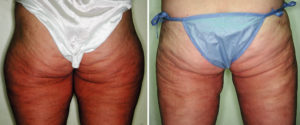A recent internet article appeared from experts in eating disorders about an Internet-fueled trend in which young women are pursuing the ‘thigh gap’ look. An erroneous concept that one can become so slender that their thighs don’t touch even when their feet are together. Eating disorder experts point out that this is an unachievable goal no matter how one diets or how much weight is lost.
The concept of the thigh gap has been around for years but, like everything else, the internet has driven this beauty concern onto very impressionable teenage and younger women. When the vast majority of people stand with their feet together, their thighs touch. This is completely normal and the vast majority of the population have upper inner thighs that meet. Only a very small percent of women have thighs so lean that they don’t touch. Any space between the thighs, even paper-thin, is referred to as the thigh gap.
As the eating disorder experts point out, no amount of diet and exercise is going to create a thigh gap. The spacing between one’s legs is largely controlled by genetics and the body shape of which one is blessed. To have a thigh gap, one has to be very skinny and wide-hipped.

The pursuit of an inner thigh gap by liposuction is also fraught with causing inner thigh skin problems. Overly aggressive liposuction in the inner thighs can lead to skin sagging and irregularities besides not achieving a thigh gap. The skin of the inner thigh is different than that of the knees or outer thighs. It is thinner and has less elasticity and does not snap back or shrink down as well as other body areas after liposuction. (perhaps the constant rubbing on it changes its elasticity)
Removing too much fat can lead to undesired inner thigh skin changes of which the only solution would be an inner thigh lift. While I will, on patient request, do aggressive liposuction on the inner thighs this is done with the presurgical awareness that a thigh lift may eventually be needed s a result. For some women they are better off combining liposuction with an inner thigh lift to get the best result from the beginning based on their skin quality and initial degree of skin fullness/laxity.
Dr. Barry Eppley
Indianapolis, Indiana


